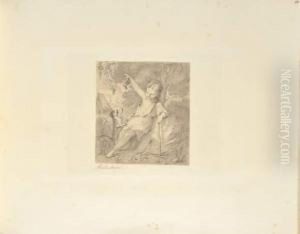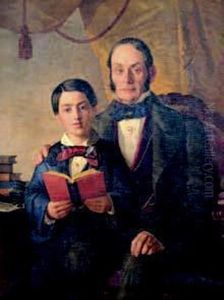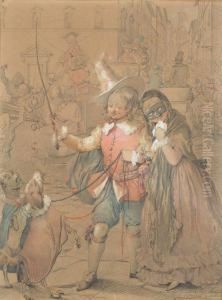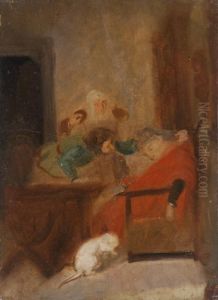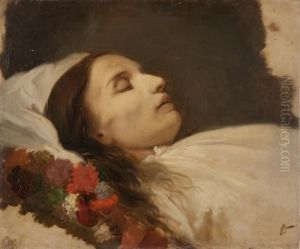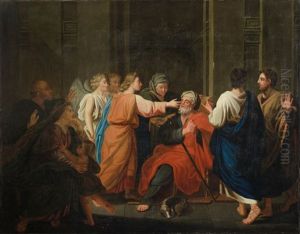Enrico Pollastrini Paintings
Enrico Pollastrini was an influential Italian artist, born in 1817 in Livorno, Tuscany. His life and work spanned much of the 19th century, a period rich in artistic evolution and socio-political change in Italy. Pollastrini's contributions to art, particularly within the realms of painting and teaching, left a lasting imprint on the Italian art scene. He was not just a painter but also a revered educator who played a significant role in shaping the future of Italian art through his mentorship of young artists.
Educated at the Academy of Fine Arts in Florence, Pollastrini was deeply influenced by the Neo-classical and Romantic movements that prevailed during his formative years. His works often reflect the tension between these styles, blending classical themes with a romantic sensibility that emphasized emotion and individualism. Pollastrini's talent was recognized early in his career, and he garnered respect not only for his artistic skill but also for his dedication to fostering talent in others.
In 1849, Pollastrini was appointed as the director of the Academy of Fine Arts in Florence, a position he held with distinction until his death in 1876. Under his leadership, the Academy flourished, becoming a pivotal institution for art education in Italy. He was instrumental in revising the curriculum to include more practical training in painting and sculpture, reflecting his belief in the importance of hands-on experience in the arts.
Pollastrini's own artistic work includes a broad range of subjects, from historical and biblical scenes to portraits and landscapes. His ability to capture the essence of his subjects with both precision and emotion won him numerous commissions and accolades throughout his career. Despite his success, he remained committed to his educational work, believing that his greatest legacy would be the artists he trained and inspired.
Enrico Pollastrini passed away in 1876, but his influence endures. His leadership at the Academy of Fine Arts in Florence helped to usher in a new era of Italian art, characterized by a blend of traditional techniques and innovative approaches. Today, he is remembered not only for his contributions to Italian art but also for his role in shaping the future of art education in Italy.
